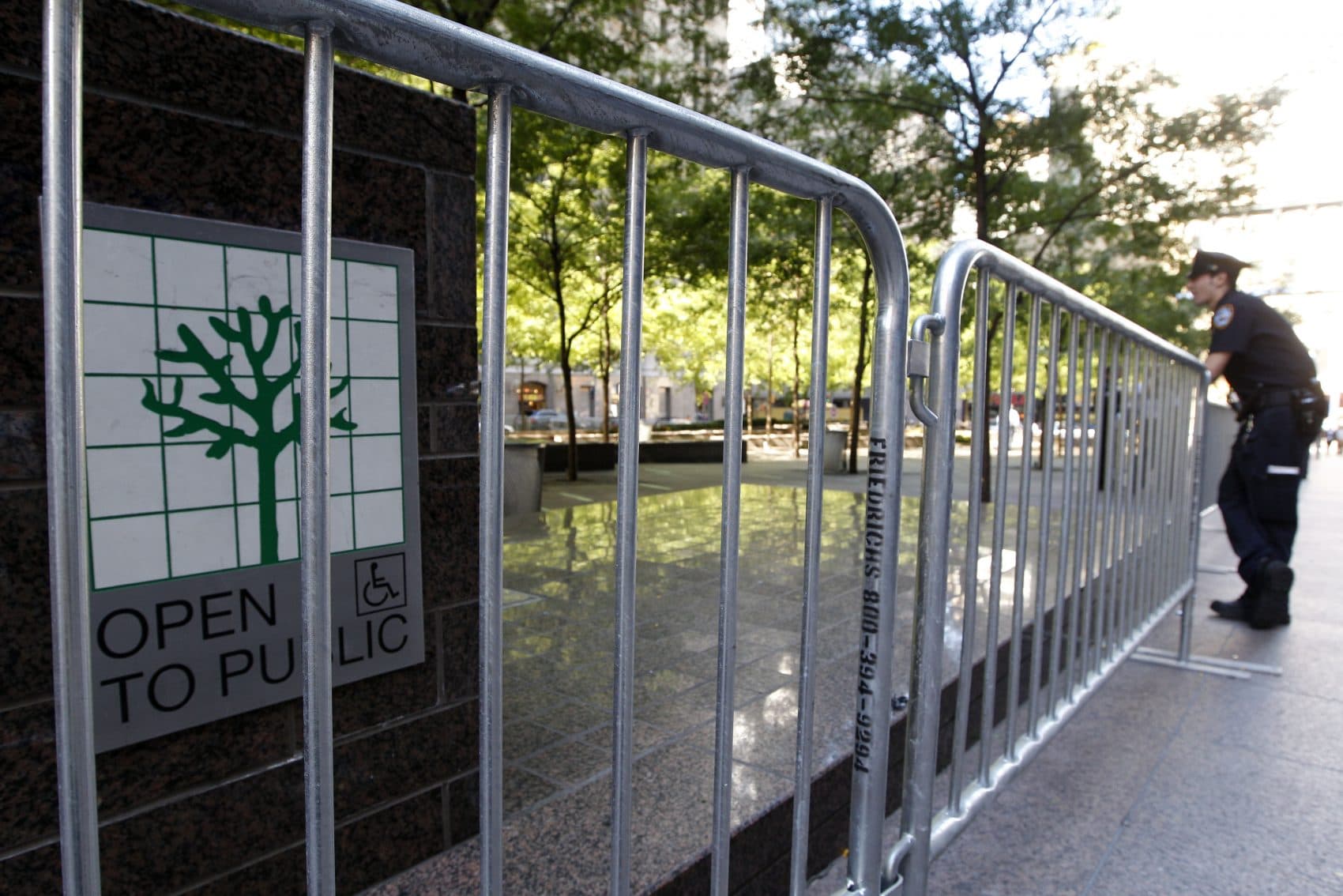Advertisement
Privatization In America
How Privatization Impacts Public Spaces And Infrastructure
Resume
As our weeklong series on privatization continues, we look at the privatization of transportation infrastructure and public space.
Here & Now's Jeremy Hobson speaks with Jerold Kayden, a professor of urban planning and design at Harvard University and founder of the organization Advocates for Privately Owned Public Space, about how the debate over privatization is changing cities around the world.
We also check in with Eduardo Engel, a professor of economics at the University of Chile who has studied public-private partnerships, about the advantages and risks of building infrastructure with private support.
Interview Highlights: Jerold Kayden
On what privately owned public spaces are
"Privately owned public spaces are small plazas, arcades and other outdoor and indoor spaces that are provided in an unusual way. Developers of office and residential towers are allowed to build bigger buildings, if they agree, in return, to provide these privately owned public spaces, normally in front of their buildings or inside on the first floor."
On whether privately owned public spaces take away public spaces
"It's entirely on private property. They are not taking away anything. They're getting something that is financially valuable to them, and in return they're providing something of value to society as a whole."
On whether privately owned public spaces are a new idea
"It's not a new idea. It started in New York City in 1961, although people in Chicago argue, 'No, our city did it first several years earlier.' But it really started in New York City, plazas and arcades, 1961, and now there are over 540 of these privately owned public spaces in New York, and it's spread around the world — San Francisco, Vancouver, Toronto, Seoul, South Korea, Tokyo, Japan, and many other cities around the world."
"The privatization of the public realm, I think at the end of the day, results potentially in a feeling that we're not really all in this together. That there's not a level playing field."
Jerold Kayden
On what's behind the spread of privately owned public spaces
"The reason was this notion of almost a free lunch. Cities and their budgets are, and were, increasingly squeezed. And this would be a good way to get public space for free, without the city allocating any of its land, or any of its money: 'Let's have the private sector provide all of these wonderful spaces.' And also they were smaller spaces, scattered about — an archipelago in a city, as opposed to Central Park. In New York City, for example, if you aggregated all of these privately owned public spaces together, they would cover 10 percent of Central Park, but they're scattered throughout the city."
On the downside of privately owned public spaces
"The downside is that you have the fox guarding the henhouse. So the developers and owners of these buildings provided these spaces not necessarily, and really not because they loved the public space and wanted to serve the public. They wanted these zoning concessions that delivered financial value to them. So when the public started to use these spaces, these owners said, 'Well, we don't really want the public on these spaces,' and too often they privatized these public spaces, and they did it through denial of access — so they would say, 'Sorry this isn't a public space,' or they'd keep it closed when it was supposed to be open. Or they'd allow adjacent, private uses to annex the public space. What I sometimes call 'café creep,' or 'brasserie bulge' or 'trattoria trickle.' And I'm not against cafés, but it makes people have to pay to enjoy public space, which violates one of the central tenets of public space."
On the effect privatizating public spaces
"The privatization of the public realm, I think at the end of the day, results potentially in a feeling that we're not really all in this together. That there's not a level playing field. There are areas for wealthier people, and then there are areas for poorer people. I mean the signature element of public space is that it is open to all, regardless of income, regardless of status, with a relative lack of interference. A sense of possibility. A sense of freedom. Even disagreements are all right, because that's the nature of society that goes beyond family or company, that everybody is involved. That gets harmed, or reduced, when people no longer feel that public spaces are truly public."
On whether there are efforts afoot to move away from privatizing public spaces
"Right now I think the answer is no. I think the decision has been made, by governments and by people, that the tension between providing privately provided public space is simply the answer to shrinking public budgets. When you have public spending on parks reducing year to year to year, at local, state and national levels, then the question is, how do we get these public spaces? And the answer seems to be, in part — at least with regard to parks — that we empower local groups, friends of, state groups, national groups, conservancies, to raise money from private donors to pay for public space. That's a great thing in many ways. And the public spaces may in fact, to some degree, look better, operate better, but at the same time, there's a feeling of loss of public control, a ceding of control, to these private donors who understandably want some degree of control in return for their contribution."
This article was originally published on May 11, 2017.
This segment aired on May 11, 2017.